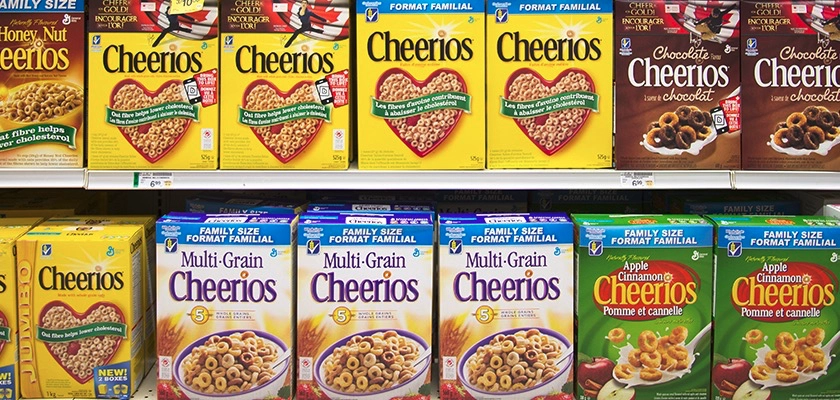General Mills Plans to Restructure and Downsize | September 2021
Despite seeing some of their best sales for the year during the COVID-19 Pandemic, General Mills is planning a downsize and restructuring of a large portion of national and international jobs.

General Mills, a multinational consumer foods manufacturer, announced plans to eliminate 700–800 jobs in the United States and Canada and 500–600 international jobs. The company employs around 35,000 full-time and part-time individuals globally. As much as 20% of its workforce at its headquarters could be cut, according to Star Tribune.
What is Downsizing?
Downsizing is the elimination of a significant number of employees from an organization. Staffing and downsizing are both important elements of management and planning. Managers, discussed in Chapter 6: The Nature of Management, make decisions about the use of the organization’s resources and are concerned with planning, organizing, directing, and controlling the organization’s activities so as to reach its objectives. General Mills is no stranger to downsizing. Between 2014 and 2016, the company eliminated 5,000 jobs.
Plans to Restructure
As companies and the external environment change, firms may need to restructure. General Mills also announced plans to restructure, an initiative that will cost the firm $170–220 million over two years. Severance payments make up a good portion of this cost. Severance is a payment that can be given to employees when they are terminated.
The announcement comes on the heels of major senior leadership changes. The roles of global chief marketing officer and president of Europe and Australia were eliminated while the new positions of chief strategy and growth officer and chief transformation and enterprise services officer were added.
General Mills has states that restructuring is not simply a cost-cutting measure and that the changes will ensure General Mills continues its momentum by reallocating resources to growth drivers. The company is pursuing several key areas moving forward, including e-commerce, data, and technology.
General Mills Accelerates
The COVID-19 pandemic created one of the best sales years ever for General Mills as consumers ate at home more frequently and increased spending on groceries. The pandemic led to panic buying and stockpiling of pantry essentials. The company, however, says its growth strategy, called Accelerate, was conceived before the pandemic.
Its Accelerate strategy has four pillars:
- Building purpose-driven brands that meet consumers where they are
- Innovating to create new solutions to consumer problems and get those products to market quickly
- Using scale to create competitive advantage through data, supply chain efficiency, and e-commerce
- Working toward environmental and social sustainability
General Mills will also invest in its top sales drivers: cereal, pet food, ice cream, snack bars, and Mexican food.
In the Classroom
This article can be used to discuss staffing, downsizing, and levels of management (Chapter 6: The Nature of Management), organizational structure and restructuring (Chapter 7: Organization, Teamwork, and Communication), and human resources (Chapter 10: Managing Human Resources).
Discussion Questions
- What is downsizing?
- Why do you think downsizing and restructuring can be costly?
- What are the potential benefits of downsizing and restructuring?
This article was developed with the support of Kelsey Reddick for and under the direction of O.C. Ferrell and Linda Ferrell.
Sources:
Kristen Leigh Painter, "General Mills tells employees 700 to 800 job cuts are expected in U.S. and Canada," Star Tribune, June 4, 2021, https://www.startribune.com/general-mills-tells-employees-700-to-800-job-cuts-are-expected-in-u-s/600064729/?refresh=true
Megan Poinski, "General Mills Plans to Cut Up to 1,400 Jobs Worldwide, Star Tribune Reports," Food Dive, June 8, 2021, https://www.fooddive.com/news/general-mills-plans-to-cut-up-to-1400-jobs-worldwide-star-tribune-reports/601397/
Megan Poinski, "General Mills Shuffles Execs as Part of Restructuring," Food Dive, May 25, 2021, https://www.fooddive.com/news/general-mills-shuffles-execs-as-part-of-restructuring/600711/



